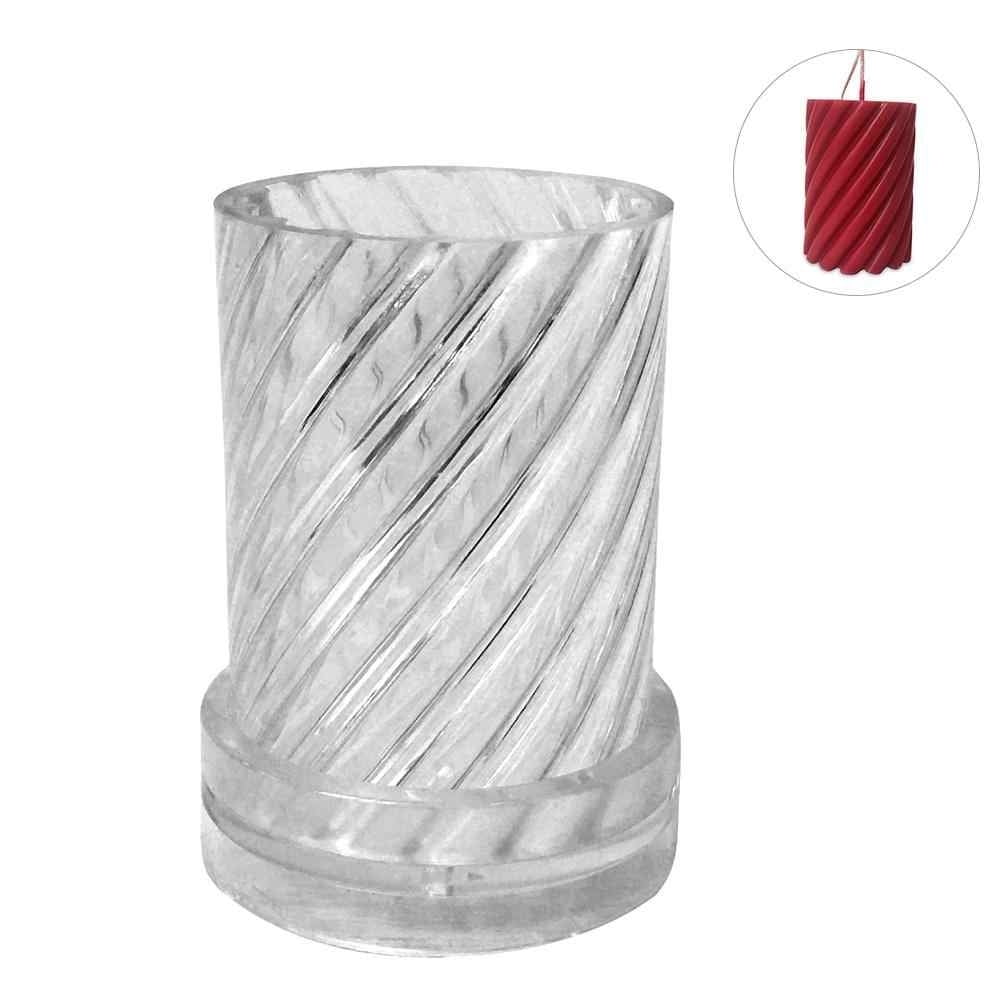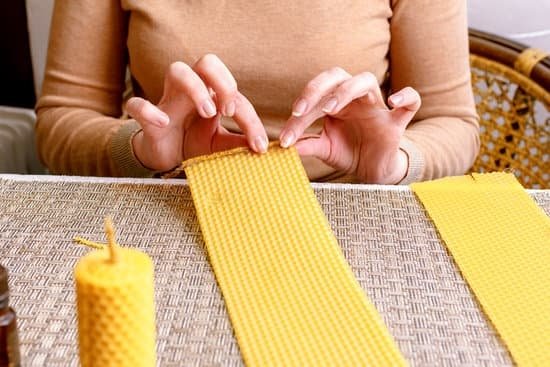Introduction
Candle making with flowers is an art form that combines the two beautiful materials of candles and flowers. The results are stunning, romantic and unique pieces that would bring an atmosphere of relaxation and calm to any room. Furthermore, it offers you creative satisfaction as you work on creating something useful while also adding beauty to your home décor.
Using a range of fresh or dried flowers, such as daisies, roses and lavender, you can create different styles of flower candles for different purposes. For example, a single long-stemmed rose inside a plain glass candle holder can be used to add a romantic touch to a bedroom, whereas multiple daisies arranged in layers around the sides of thick white pillar candles gives off a bright and cheerful air in any living space. Lavender mixed with beeswax creates a delightful scent when lit and can be used either as centrepieces or accent pieces throughout homes and other places.
For extra personalisation, you could choose different types of scented candles if desired or even decorate them with ribbons or glitters to give it more character. Ultimately, combining these two elements allows greater scope for creativity while also making great use out of your flowers without having to worry about them wilting away after time. All in all, creating flower candles is a fun activity for both hobbyists or experienced crafters alike!
Preparation Tips
Candle making with flowers is an enjoyable, creative process. To make a beautiful and unique scented candle using fresh flowers, you will need the following tools and materials:
– Fresh flowers of your choice
– Candle wax
– A container to pour the wax in
– Soy or beeswax candle wicks
– Wax dye (optional)
– Essential oils for fragrance (optional)
– Embedments (such as dried fruit, herbs, or glitter, optional)
– Double boiler
– Cookie sheet
After gathering all the necessary items, here are the steps to follow:
1. Preparing the Flowers – Gently remove any thorns or extra foliage from the flowers. Make sure to leave some petals on it so that it will be visible when placed in the finished candle. Place parchment paper in a cookie sheet and arrange the flower on this paper and place it into a preheated oven to help keep the shape of the flower when placed in hot wax. Bake at a low temperature (275°F) for two minutes. Let cool completely before handling.
2. Preparing Wax – Begin by melting your wax using a double boiler and stirring until completely melted. If wanting to add color or scent to your candles, mix in those at this point according to the directions on their packaging.
3. Adding Flowers & Wicks ” Securely tie wick near the bottom of your chosen container then lightly press prepared flowers onto liquid wax around wick until secure. Pour melted wax into prepared container over flower/wick until 2” below top of container; let cool completely before handling again after pouring wax.. This allows space for any contracting that may occur when cooling increases which can create small surfaces or holes in finished product which you may want to address after cooling.
4. Finishing ” Once cooled trim wick if desired, adorn with embedments if desired, package or display as desired
Candle Making Techniques
Candle making with flowers is becoming an increasingly popular way to create beautiful and unique candles for personal use or to give as gifts. Making candles with flowers is a creative and fun hobby that yields attractive results. Each flower-infused candle you make will be one-of-a-kind, representing the unique character and beauty of your chosen flowers.
To begin crafting a candle with flowers, you must first select the kind of wax and mold you want to use. Soy wax is the most popular choice because it’s all natural and emits minimal toxins. Beeswax, paraffin wax, and gel wax can also be used in combination when making scented candles. Choose a mold that comes already prepared with a wick attached, or would will need to attach one yourself if you choose an open design.
The next step in making a flower-filled candle is selecting and combining the dried flower petals or buds that best suit your scent preferences or design aesthetic. Depending on what type of candle you’d like to create, you should consider purchasing brightly colored petals or subtle variations of texture then mixing them together until you have the perfect blend. To prevent clumping from occurring during the candle pouring process, always add small amounts of dry rice flour when using flower petals in your wax mixture.
When it comes time for pouring, slowly add pieces of your freshly blended mixture into the mold while stirring slowly so that everything combines evenly without bubbles forming on the surface area. After this step has finished be sure to allow between 16-24 hours for the mixture to settle before attempting to remove it from its container and package it safely for gifting or display purposes.
By following these simple steps anyone can create unique and custom scented candles based off their favorite floral combinations!
Ideas for Decorating With Candles and Flowers
Candle making with flowers can be a fun and creative way to add a beautiful splash of fragrant colors to your home. There are many different types of flowers you can use that have a variety of colors, shapes, and scents. Roses, lavender, peonies, chrysanthemums, gerbera daisies, orchids, sunflowers, and lilies are just some examples of what you could use in your candle projects.
When learning how to decorate with candles and flowers, consider the aesthetically pleasing ways in which the two objects can interact with each other. One option is to put small flowers in individual vessels around the base of the candle for colorful accents. You could also arrange multiple candles among larger flower arrangements such as bouquets or potted plants and group them on a shelf or mantel. Another way to make use of candles as part of flower displays is to create structures for them by forming wreaths out of large foliage (such as magnolia leaves) that support ceramic holders for the pillar candles. Finally, if you’re feeling more artistic you could even make petal encrusted votive holders!
Recommended Candle Making Supplies
When making candles with flowers, there are a few key supplies that one will need to consider. The first of these is the type of wick used for the candle. Cotton or paper is the most common materials used for making wicks, although using ones such as soy wax or beeswax can allow for a longer burning time and a cleaner burn as well. When selecting wicks, it’s important to ensure you pick the right size for your specific project – too large and it won’t be able to draw up the wax; too small and it will become overwhelmed by the heat of the flame, resulting in uneven burns.
The next step is to choose an appropriate wax base. Paraffin waxes offer fast and easy melts but tend not to have much scent associated with them, while more expensive beeswax offers higher melting points, allowing you to experiment with different melting combinations and add scent into your candles which will increase their beauty when adding dried flowers inside them.
Finally, users should think carefully about what types of molds they plan on using when creating candle forms with floral decorations. Plastic molds are generally easier to use than glass or ceramic counterparts, yet they may pose significant safety risks if one is not mindful about how hot those molds get during production. As such, always exercise caution when using any type of mold and follow instructions closely on how long each item should remain in a given form before being removed from the mold safely.
Safety Guidelines
When working with candle making and flowers, it’s important to consider certain safety measures. Many flowers may be toxic if ingested, so avoid using them if they are not edible. Additionally, it’s important to wear protective gear such as gloves, a face mask, an apron and eye protection when working with hot wax or other potentially hazardous materials. It is also important to use a ventilation system when dealing with any flammable compounds associated with making candles and keep the work area free of clutter. Always keep matches and lighters away from children or anyone unfamiliar with candle-making materials and follow the directions on all products carefully. Be sure you know how to extinguish a fire properly in case one breaks out in your workspace. Finally, never attempt to make large batches of candles or use intricate procedures without adult supervision at all times.
Troubleshooting
Scent Fluctuations: If your candles produce inconsistent scent over time, it might be an indication of too much wick or not enough wax. Too much wick will allow the flame to burn hotter and faster, reducing the long-term lifespan of the fragrance. To fix this problem, trim the wick down to ½ inch before relighting your candle whenever it starts to give off a faint scent. On the other hand, if there is too little wax in your containers, try using a double boiler or a warmer to melt and add additional melted wax around the container.
Wick Curling: This is an especially common issue when dealing with larger form candles. Poorly blended waxes and high melting point oils can cause issues when combined with certain types of wicks. To avoid this problem try testing different combinations of wax and oil until you find one that works best for your application. Additionally, don’t forget to prime your wicks by soaking them in oil overnight prior to pouring.
Discoloration: Discoloration can occur due to overheating or too short insertion length of the flowers into the candle mixture before cooling. To prevent discoloration, use lower temperatures for candle making processes longer than usual, keep molds at room temperature, and check lengths before inserting flowers into candles (usually 1″2 cm).
Conclusion
Candle making with flowers is a fun and creative way to introduce a botanical element into your home decor. It can be used for a wide variety of occasions, from special events such as weddings and anniversaries, to adding some candlelight ambiance to your everyday living room or bedroom. Crafting beautiful floral candles requires patience and attention to detail, as each process needs to be followed correctly in order to get the desired result. Through this project, participants have learned how to prepare materials for use, create wax embeds for the container, apply colorant pigments, melt and mix wax correctly, scent their candles with essential oils or fragrances, and finally assemble all components including wicks.
In conclusion, making candles with flowers is an enjoyable experience which encourages collaboration among participants where everyone gets the chance to participate in each step of the process. It has given an opportunity to explore the potential of aromatherapy while creating something nature-inspired and unique. Furthermore, it allows everyone to cultivate their artisanal skills in hand craftsmanship while experimenting with colors and designs. Creative ideas that might provide further exploration include using dried petals instead of fresh ones, blending natural dyes into the candle mix for extra vividness, introducing unique scents such as smoked wood or exotic fruits extracts or possibly forming geometric shapes within the wax itself for more structure or visual interest.

Welcome to my candle making blog! In this blog, I will be sharing my tips and tricks for making candles. I will also be sharing some of my favorite recipes.





